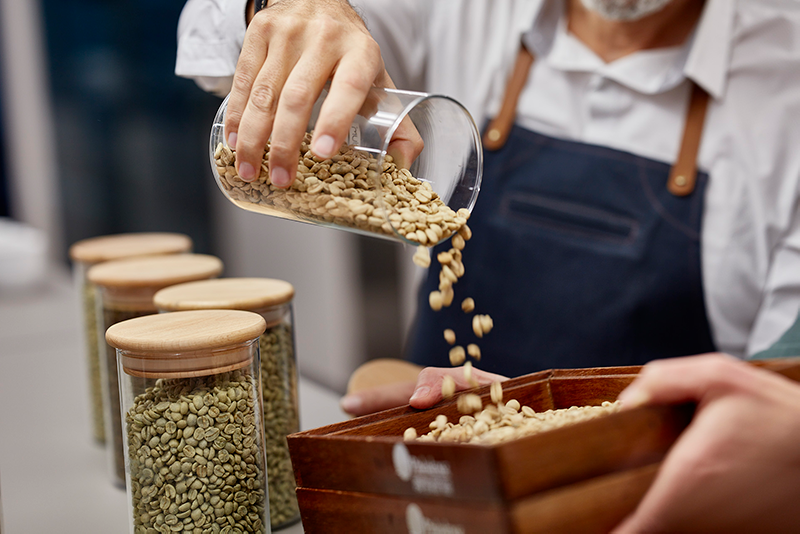Everything begins with green coffee
Whether from Brazil or Indonesia, whether Arabica or Robusta - at the beginning of every coffee there is a cherry-like fruit: the coffee cherry. As soon as the fruits are picked from the coffee tree, they are dried. The unroasted bean is known as "green coffee" because the bean actually looks greenish (but depending on the type of cherry, it can also be yellowish-brownish) when dried and unroasted. The beans are stored raw, in a state in which they can be kept without loss of quality and taste. A green bean differs from a roasted bean mainly in smell: surprisingly, it does not smell like coffee, but rather like freshly mown grass or green tea.
Ripe coffee cherries: Inside this drupe you can find the coffee bean.
Our colleagues at Blaser Trading enable the import of the best green coffee, which can be traced back to the respective coffee cooperative. This high level of quality and transparency is only possible thanks to the partnerships we have maintained over many years with cooperatives and coffee farms in almost all countries of origin.













